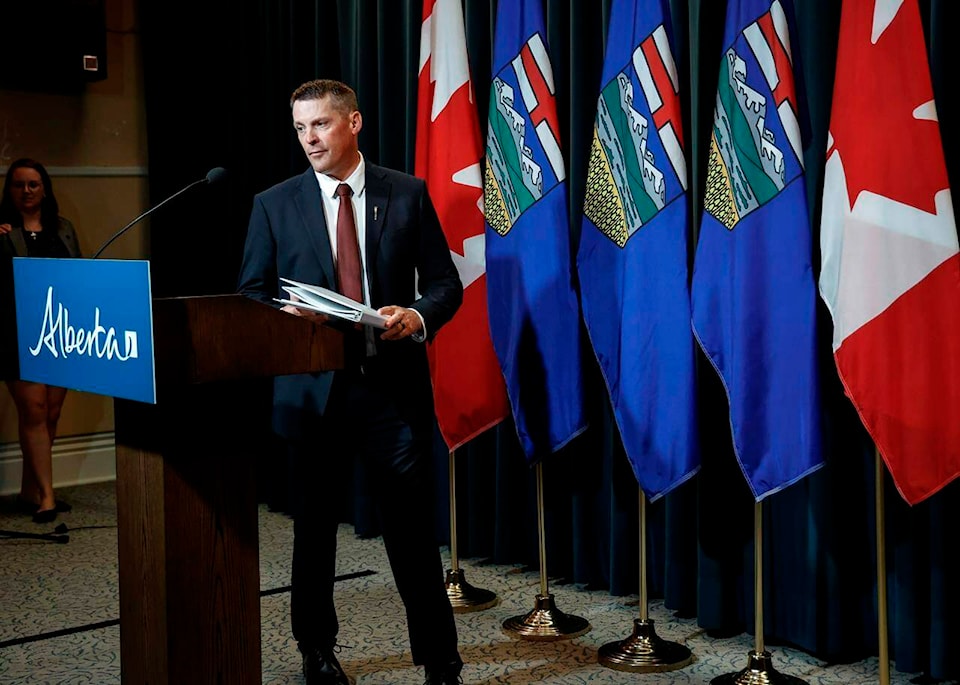Alberta has tabled its 2024 budget.
Looking to strike a balance between growth and spending, the budget tabled is putting money towards health care, and education to help build safe communities while also maintaining balance.
“Alberta is growing,” said Finance Minister and Drumheller—Stettler MLA Nate Horner in the news release announcing the budget.
“Budget 2024 is a plan that manages the pressures faced by a growing province today while securing the future for generations who follow. I’m proud of the choices we made in this budget that support Albertans’ top priorities and prepare our province to meet the challenges that lie ahead. Budget 2024 invests today and saves for tomorrow so we can continue to be the nation’s economic engine.”
The budget sees a 4.4 per cent increase in spending for health care and mental health supports, for a total of $26.2 billion in operating costs.
Specific to health care, the province is spending $475 million to modernize Alberta’s primary health care system, $6.6 billion for physician compensation, and $287 million over four years as part of an agreement with the federal government for new mental health and addiction facilities, plus other projects.
The Red Deer Regional Hospital will be receiving $810 million over three years; $156 million in 2024, $316 million in 2025, and $343 in 2026.
“In Budget 2024, Alberta’s government is continuing to prioritize the delivery of high-quality, reliable health services across the province,” said Health Minister Adrianna LaGrange, via the media release.
“This year’s record investment of $26.2 billion in health care will help us continue toward our goals of improving primary health care, adding capacity, reducing wait times, growing the workforce and advancing the Healthcare Action Plan.”
Education will also see a 4.4 per cent increase, with $9.3 billion in operating expenses.
Over $680 million will be spent on 43 priority projects creating 35,000 new student spaces. Through 2024, 98 projects are in different stages of planning, design, and construction.
In advanced education, university tuition will be capped at two per cent in 2024 and subsequent years.
“The Alberta Advantage is back and booming, and people from across Canada and around the world are once again flocking to our incredible province,” said Minister of Education Demetrios Nicolaides.
“We’re providing $842 million in new funding to help our school boards hire more than 3,000 teachers and educational staff over the next three years. We will also boost funding to vulnerable students by increasing funding to the PUF program by $26 million.”
Just under $3 billion has been budgeted for Albertans receiving Assured Income for the Severely Handicapped (AISH) and $355 million for the Alberta Child and Family benefit.
The province will be supporting 3,200 apprenticeships over three years with a $102 million boost in workforce support, plus an additional $62.4 million to boost physician education.
Alberta will also support public safety with $1.2 billion in operating expenses to help police and mental health crisis teams work on the streets. Additionally, $74 million will also be directed to the Alberta Emergency Management Agency.
After a reasonably heavy 2023 fire season, the province is directing $151 million in operating expenses over three years to enhance Wildfire Manage Programs as well as an additional $55 million in capital investment for equipment and facilities, including upgrading the province’s water-bomber fleet.
Finally, after the drought in 2023, which is expected to carry through 2024, the province is spending $1.3 billion on water management and drought preparedness over three years. This expenditure includes $272 million for irrigation projects and $539 million to support municipal water supplies.
Total capital expenditures will sit around $25 billion over three years, with funds directed to build schools, hospitals, and roads while supporting around 24,000 direct jobs and 13,000 indirect jobs.
While the outlook remains positive for Alberta, the budget does address several challenges, such as increased demand for housing, health care, education, world geopolitical turmoil and uncertainty from federal policies, which could all slow growth in the province.
“Budget 2024 prepares Alberta to face those headwinds, with its responsible plan that invests in Albertans today and builds prosperity for tomorrow,” states the release.
An estimated surplus of $367 million is forecast for the 2024/25 fiscal year, with a legislated requirement of half the funds being used to pay down the debt.
Despite making debt payments, the province does find itself in a cash-negative position and will be borrowing to fund some of the capital projects it is planning.
“We’re striking a balance,” said Horner, during a media availability.
“It hasn’t been easy.”
In addition to the debt repayment, the province is also planning to add around $2 billion to the Heritage Trust Fund, increasing its value to $25 billion.
As noted in the premier’s address last week, the promised income tax cuts did not materialize in Budget 2024. The tax cut is expected to be legislated in 2025 and phased in beginning in 2026.
In total, the province is expecting an overall revenue of $73.5 billion, $2.1 billion lower than forecast in the third quarter of 2023-24, against an expected $73.2 billion in expenses, a 3.9 per cent increase from the forecast.
Major revenue drivers include personal income tax, which is increasing to $15.6 billion fueled by population growth, $7 billion in corporate income tax, which is down slightly, and non-renewable energy, estimated to drop to $17.3 billion from $19.4 billion.
Budget 2024 will also introduce a $200/year electric vehicle tax, which is estimated to bring in $8 million in revenues by 2026/27.
The tax is designed to be a similar amount to what gas-engine vehicle owners pay in fuel taxes every year and is similar to what some other jurisdictions around North America have done so far.
